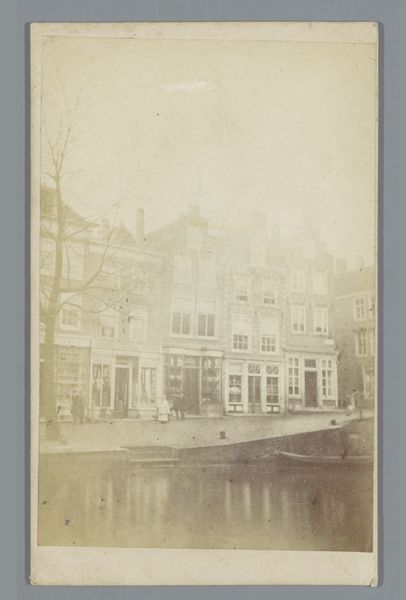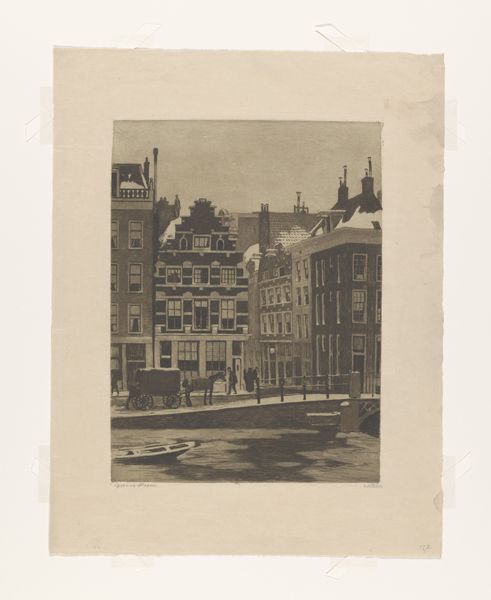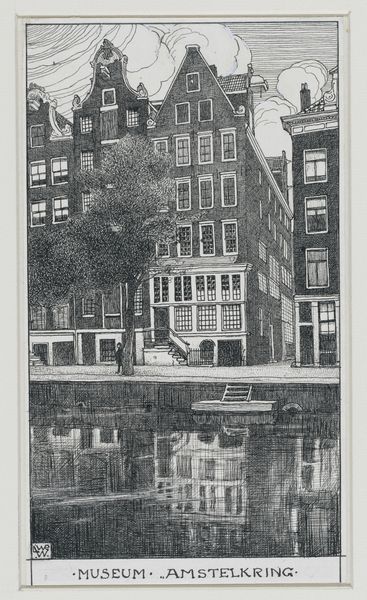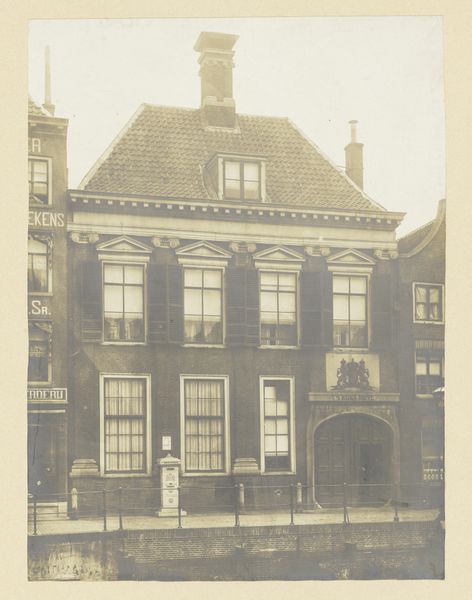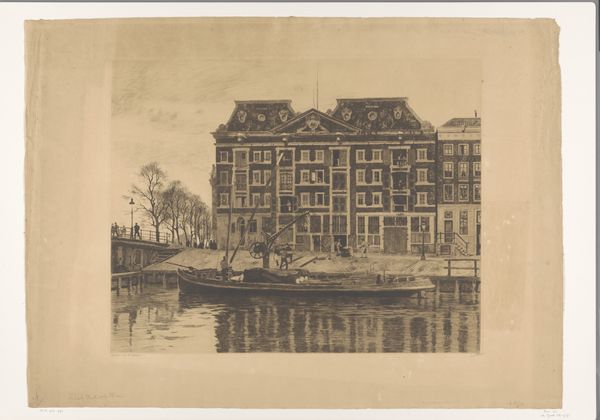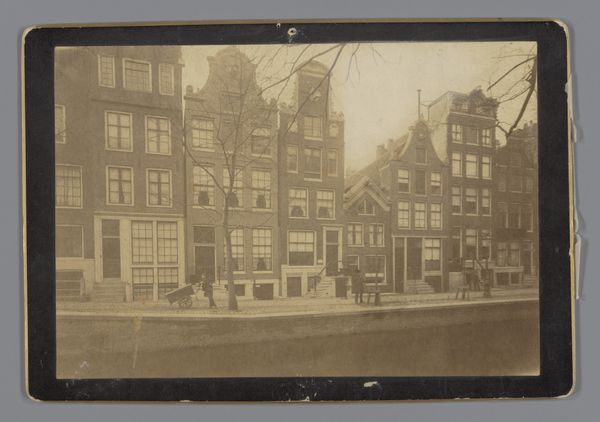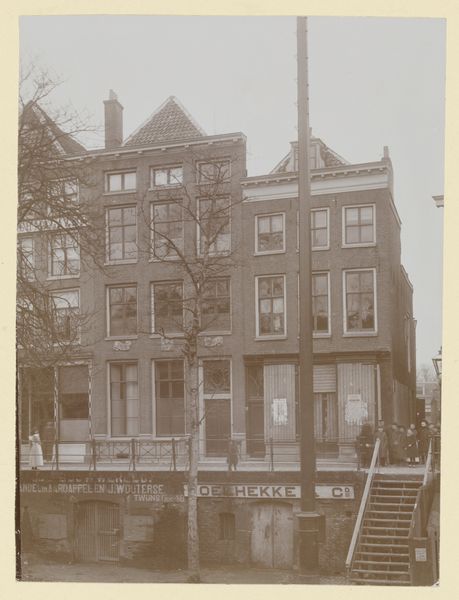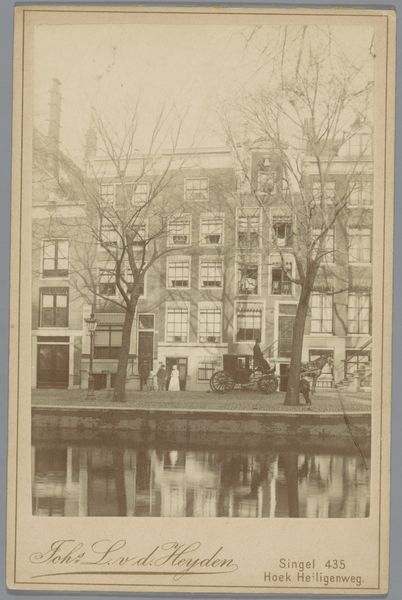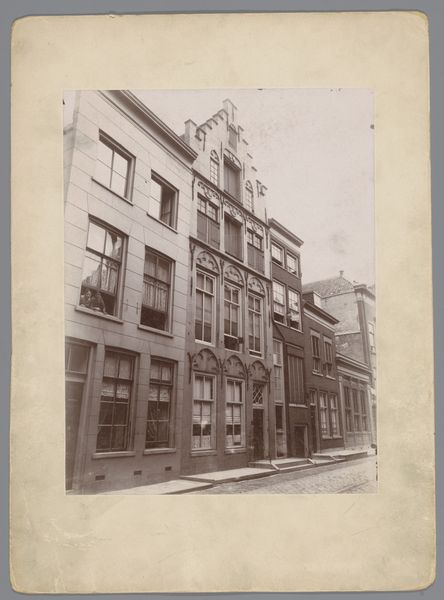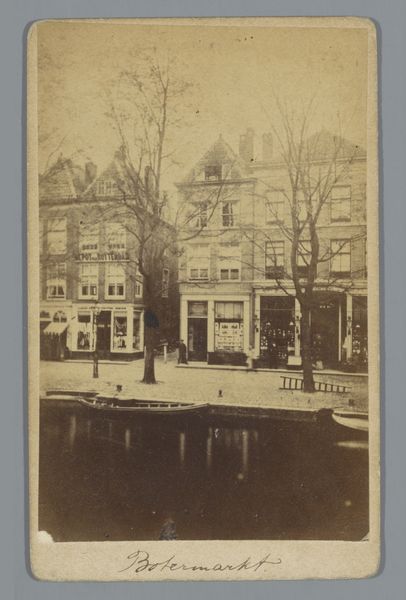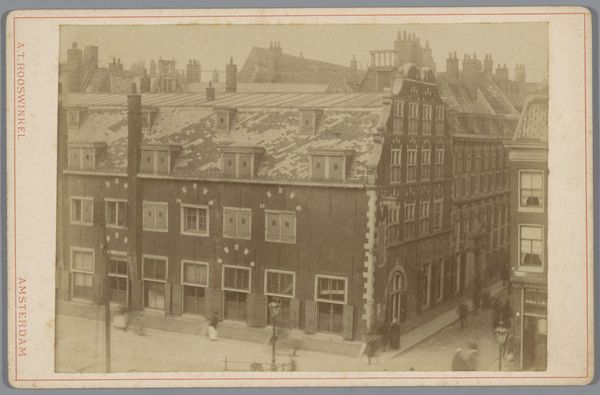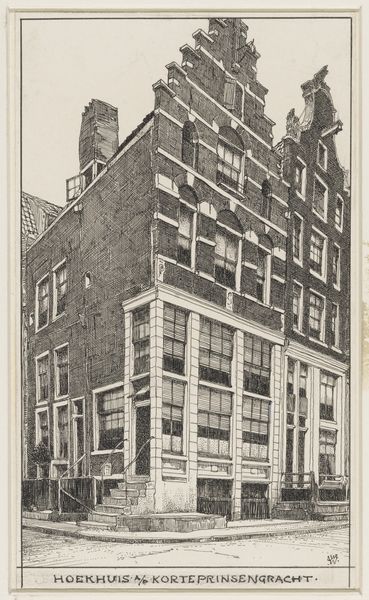
photography, gelatin-silver-print
#
dutch-golden-age
#
landscape
#
photography
#
gelatin-silver-print
#
cityscape
#
realism
Dimensions: height 94 mm, width 80 mm
Copyright: Rijks Museum: Open Domain
Curator: This gelatin silver print from 1908 presents "A View of a Row of Houses Along a Canal in Amsterdam" by J.J. Reynders. There's a melancholic feel to it. Editor: It strikes me as quite subdued. The tonal range of the gelatin silver print creates a muted, almost dreamy quality. The way light interacts with the brick and water is gorgeous though, and reminds us that photography, even this early, is fundamentally about capturing reflected light and specific atmospheric conditions. Curator: It's also a fascinating record of urban space at the turn of the century. Amsterdam then, and now, has been heavily shaped by urban planning, isn’t it? What kinds of lives were being lived in those canal houses? What were their relationships to commerce, to labor? Editor: Exactly. And thinking about the labor involved, from the photographer meticulously working with their camera and chemicals in the darkroom, to the craftsmen constructing those houses—bricks layered upon bricks—highlights the physical work involved in shaping our environments. The very process echoes the built landscape in a fascinating parallel of materiality. Curator: Do you also find a tension between the "realism" that the photograph supposedly captures and the artistic intervention of Reynders in composition and framing? Where and how do you imagine Reynders positions themself? What are the implications? Editor: Definitely. It speaks to photography as not a simple act of recording, but a carefully constructed representation. Even with so-called "realism", perspective, lighting, and angle, which is especially noticeable when looking at that gracht create subjective interpretations. I find it particularly telling in his deliberate choice to capture the bare trees. Curator: Ultimately, I am stuck on how our perspective, how the lens itself, carries embedded historical meanings about representation and who gets to produce the narrative around urban life. What assumptions is the photographer making? Who has access? Editor: Good point! Well, for me, viewing the final print and appreciating the labour involved encourages us to slow down and value what is usually seen as quite mundane.
Comments
No comments
Be the first to comment and join the conversation on the ultimate creative platform.
